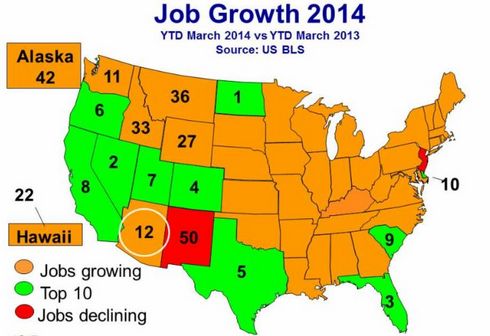Economic news continues to be positive on virtually all fronts. The economy now seems to be benefiting from pent up demand caused by the extreme winter. In addition, it is normal for the economy to pick up strength at this stage of the cycle. So far, so good for the spring thaw.
U.S. Snapshot:
- Initial claims for unemployment continued to show good results. This is the second week in a row that initial claims were just slightly above 300,000. This is 13.9% below a year ago and bodes well for the unemployment rate over the near term.
- Consumer prices were up 0.2% for the month and now stand a modest 1.5% above a year ago. The core rate of inflation (all items less food and energy) was up 1.6% from a year ago.
- Industrial production in March topped expectations on utilities but the manufacturing component was also healthy. Industrial production advanced 0.7% following a gain of 1.2% in February. It now stands 3.8% above a year ago. This is a healthy gain.
- Capacity utilization rose 0.5% in March and now is up 1.5% from a year ago. At 79.2, the index now is approaching levels that historically have been associated with increased spending by businesses on new plant.
- Retail sales grew 1.1% in March after rebounding 0.7% in February. Much of the advance came from motor vehicles which jumped 3.1%. Excluding motor vehicles, sales increased a healthy 0.7% in March. Total retail sales now stand 3.7% above a year ago.
- The manufacturing and trade inventories/sales ratio kept stable in February at 1.31. This is the same level as January but up from 1.28 a year ago. This indicates that inventories are in line with sales and that manufacturers are not likely to cut back on production.
- Housing starts picked up in March but not as much as expected. However, strength was in the single family component while it was expected to be in the multifamily component. Single family starts were up 1.9% from a year ago. While this is anemic given the extent of the decline during the recession, at least it is a step in the right direction.
Arizona Snapshot:
- The state’s unemployment rate remained unchanged at 7.3% in March. The U.S. rate was also flat in March at 6.7%. A year ago, the Arizona rate was 8.0% and the national rate was 7.5%.
- In March, the state gained 47,400 jobs compared to a year ago. This is a 1.9% growth rate. Greater Phoenix gained 39,900 jobs over the year ending March for a 2.2% growth rate. Greater Tucson grew by 3,100 jobs or a 0.9% gain.
- The largest numerical gains were in Education and Health services, Trade, Transportation and Utilities, Financial Activities, Professional and Business Services, and Leisure & Hospitality.
- While the U.S. has regained virtually all the jobs lost in the last recession, the state has regained just 57% and Greater Phoenix has regained 63%. This is because the decline in Arizona was greater and the recovery started later than in the U.S. as a whole.
- For the first 3 months of the year, Arizona is 12th out of 50 states in terms of percentage growth in jobs (see chart below). Greater Phoenix is 11th out of 27 major employment markets in the U. S. for the same period. While this is satisfactory, it is well below the ranking the state and Greater Phoenix usually hold at this point in the business cycle.
- Enplanements at Sky Harbor were up 2.6% in February compared to a year ago while deplanements were up 3.2% versus a year ago. Total traffic was up 2.9%.
- According to RealData Inc., the number of multifamily units in apartment complexes of at least 50 units in Greater Phoenix rose 2.2% to 266,387 as of the first quarter of 2014. Vacancy was 7.9% compared to 8.8% a year ago and 7.8% in the 4th quarter of 2013. Rents were up 2.4% from a year ago.

